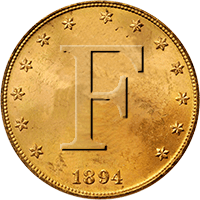Before getting started on any programming - perform some air tests to see which frequency is "hottest" - I guarantee you will find one of them to edge out the other three frequencies on depth and sensitivity. Use period coinage in your tests - Indian head cents, war nickels, silver coins, etc. You will find that different coins"resonate" with different frequencies and you may find that one hits better on the silver while another freq. will light up nickels and smaller coins easier - hard to say which without doing the tests!
ID norm is set to 18 khz values which gives the least amount of spread for US coins, but 8 khz won't be as sensitive to smaller aluminum items and is a great freq for US coins.
The above program will make nickels a "high tone" along with copper pennies and silver coins. New zinc pennies may try to sneak in at 81-83 sometimes, but you can easily tell the tone difference between zincolns and copper pennies by conductivity. Some Indian cents will read as low as "75" in 18 khz - so if you're in an old enough area and get a deeper "zincoln" hit - should probably dig it up!
This is 5-tone audio and is great for coinshooting - personally I would add a "silver screamer" and eliminate the lower end of the spectrum for iron if you are solely interested in coins and jewelry...
Stick with this program but set up 5 tones in this manner:
470 Hz (00-57), 725 Hz (58-66), 644 (67-80), 725 Hz (81-91), 800 Hz (92-98 )
Since Disc = 10, and 11-40 is notched...you will get ZERO audio response from iron and small foil items (anything <40 VDI)while at the same time getting a better audio indicator of silver dimes and higher. You can notch iron out completely and NOT disc - and have the same effect with slightly more sensitivity to deeper items...but the choice is yours! It's better to start with something that's easy to understand and easy to adjust for site conditions and go from there...look forward to seeing how it works in the park and as always...we want pics!





